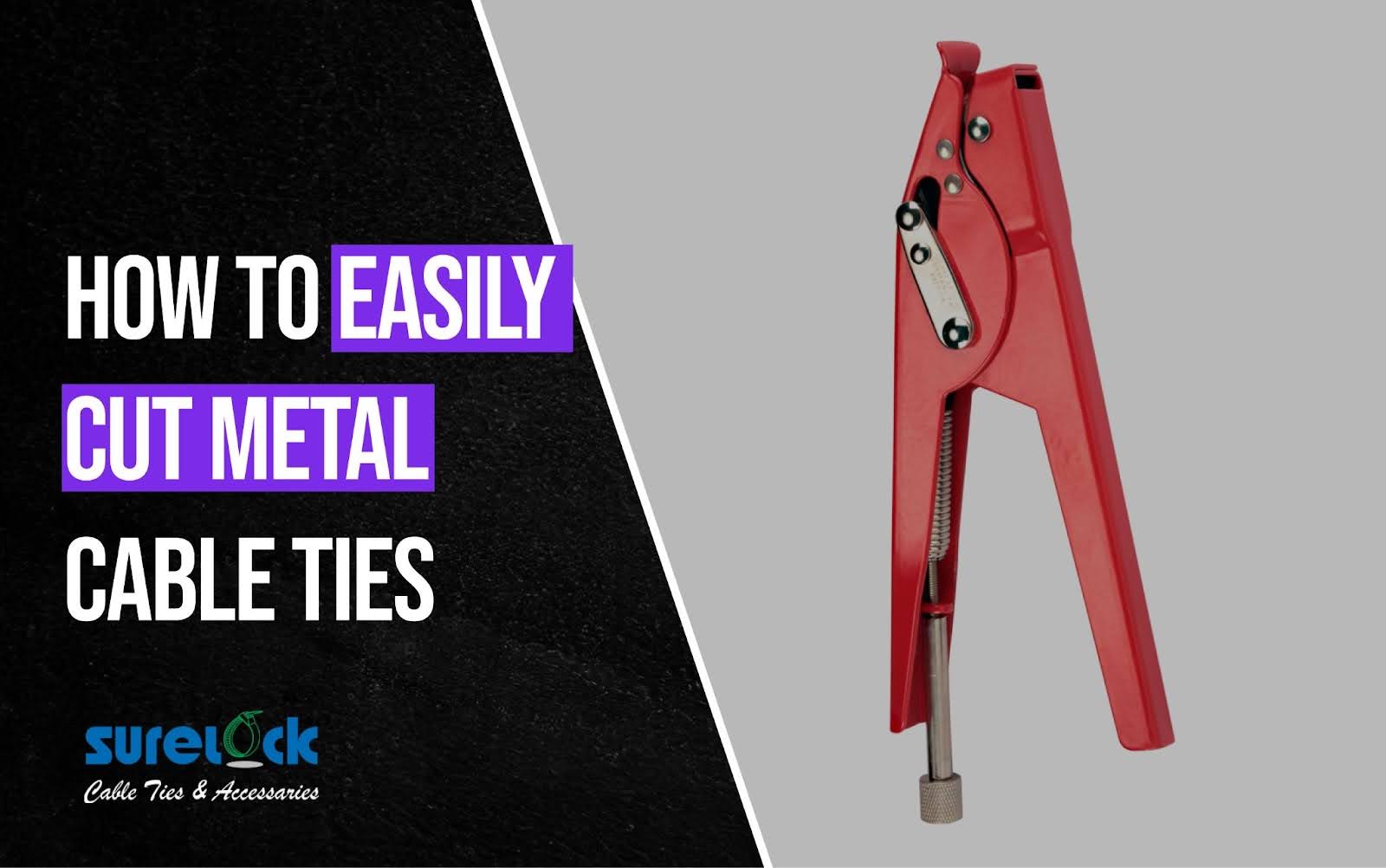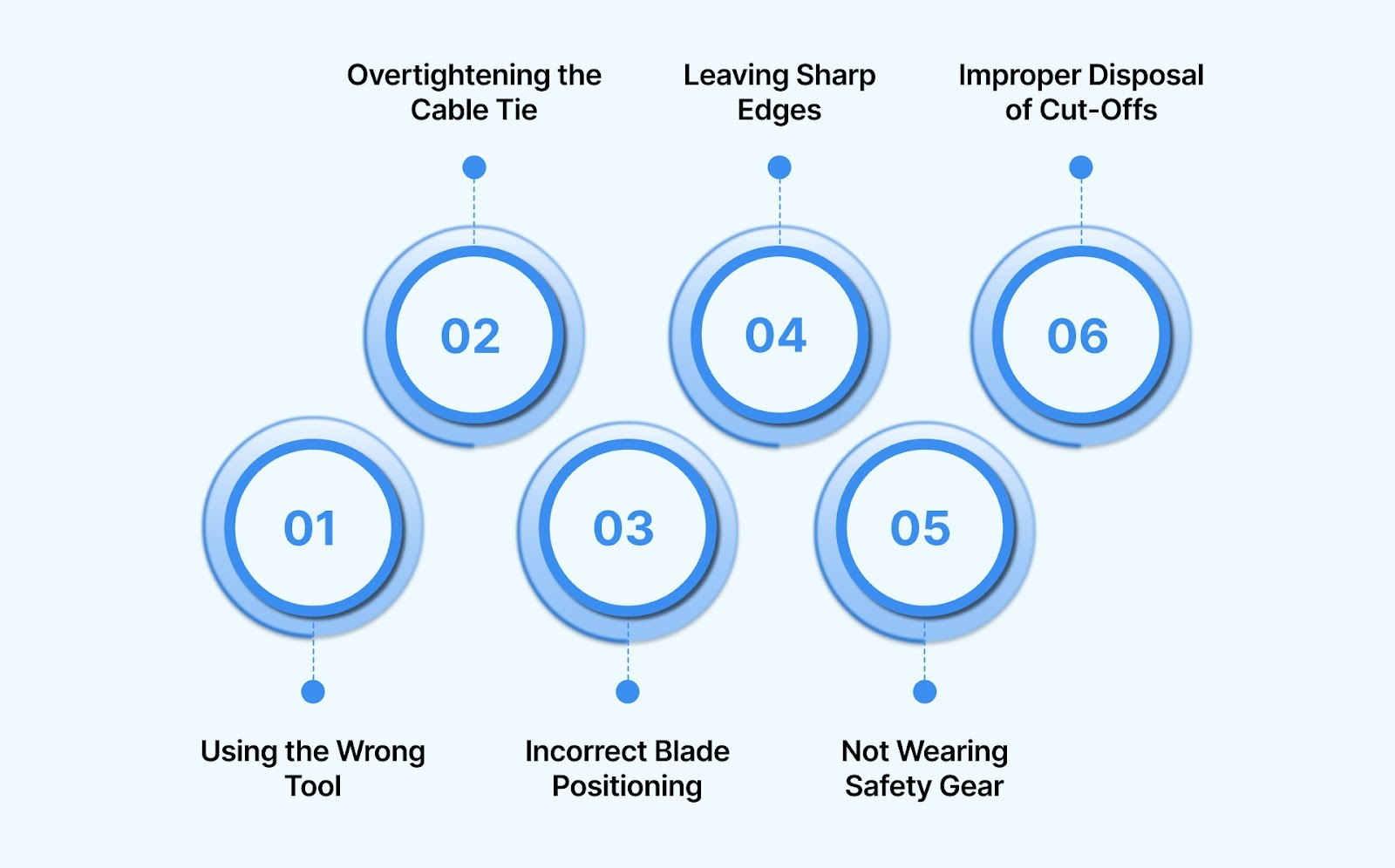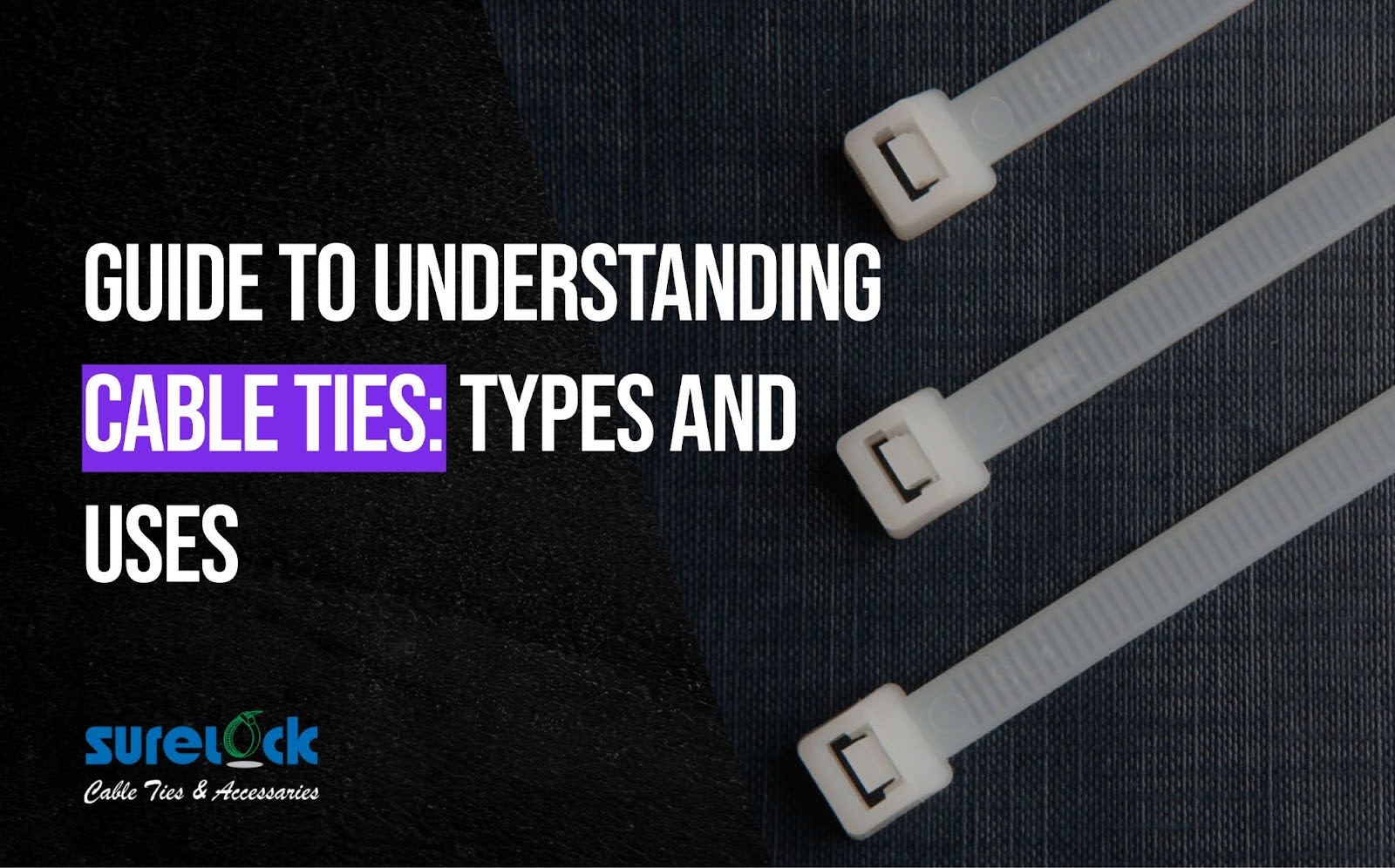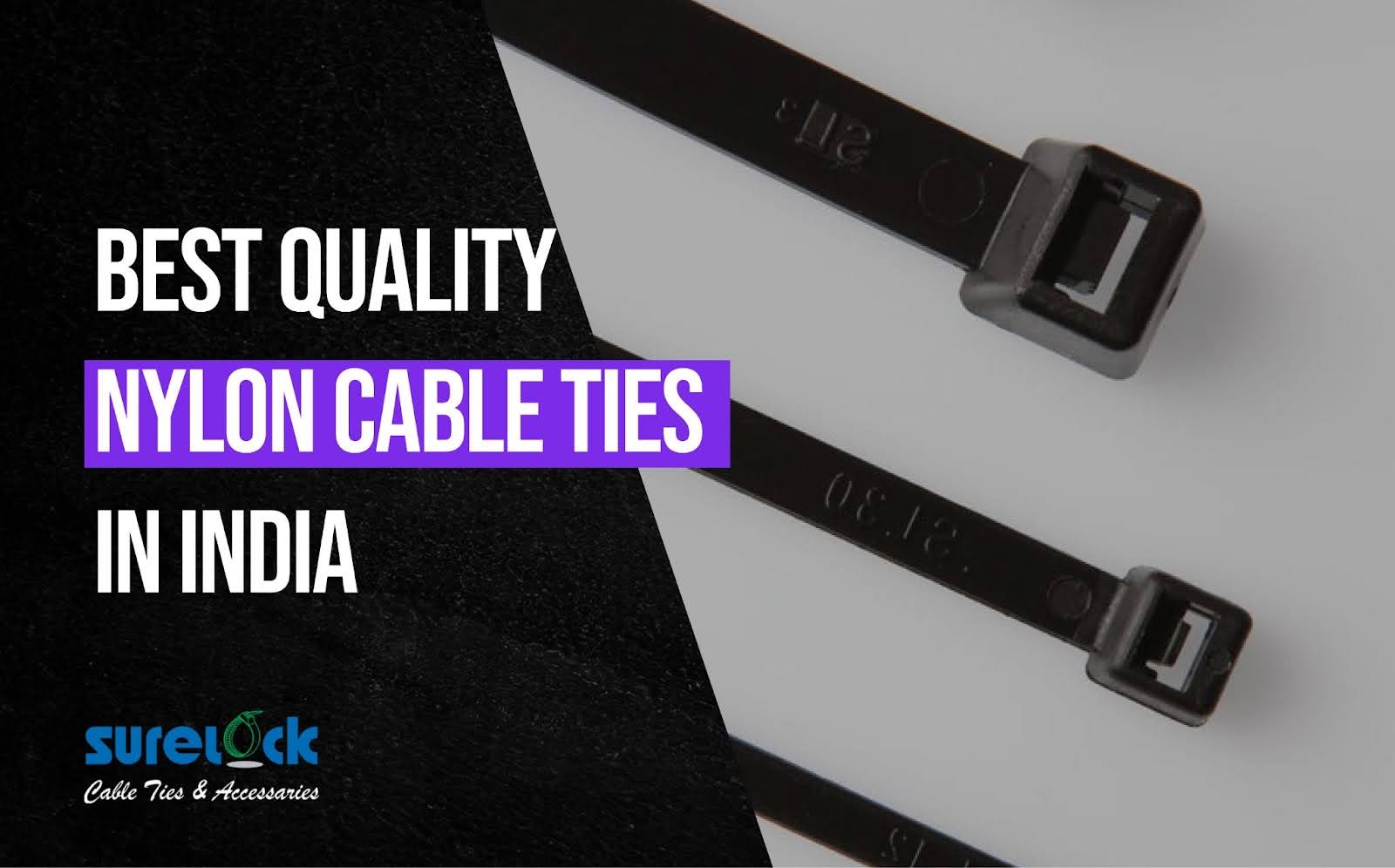How to Easily Cut Metal Cable Ties
October 10, 2025

Metal cable ties, particularly stainless steel variants, are indispensable in industries where strength, durability, and reliability are essential. The global market for stainless steel cable ties is projected to reach USD 1.1 billion by 2031, growing at a CAGR of 5.4%, and its importance is increasingly recognized across sectors like construction, telecommunications, aerospace, and more.
Unlike nylon or plastic ties, the stainless steel cable ties are built to withstand high stress, extreme temperatures, and challenging environments. However, without the right approach, cutting a metal cable tie can lead to injuries, damaged equipment, or wasted time. That’s why knowing the correct method and investing in the right tools is essential.
In this guide, we will walk you through the steps of safely and efficiently cutting metal cable ties, ensuring that your fastenings remain secure and long-lasting while maintaining the integrity of your installations.
Key Highlights:
- Metal cable ties are strong, durable fasteners used across industries, but cutting them requires care to avoid injury and damage.
- Challenges include sharp edges, tool compatibility, tight spaces, and flying debris, highlighting the need for proper tools and safety precautions.
- The cutting process involves selecting the right tie and tool, proper tensioning, accurate positioning, and smoothing edges for a safe, clean finish.
- Regular maintenance, safe disposal of cut-offs, and correct storage help ensure ties remain reliable and long-lasting.
What Are Metal Cable Ties?
Metal cable ties, or stainless steel zip ties, are high-strength fastening solutions that bundle, secure, and organize cables and other components. They are made from corrosion-resistant stainless steel, making them ideal for use in environments exposed to chemicals, moisture, extreme temperatures, or physical stress.
These ties are commonly used in industries such as the following:
- Aerospace: Securing wiring and components in aircraft under extreme conditions.
- Marine: Bundling cables and hoses in saltwater and humid environments.
- Automotive: Fastening vehicle wiring and assemblies against vibration and heat.
- Telecommunications: Organising network cables for outdoor and rooftop installations.
- Oil and Gas: Securing pipelines and equipment in high-temperature, high-stress conditions.
Although metal cable ties offer exceptional strength and durability, cutting them can present challenges that must be addressed to ensure optimal performance and safety. Let’s address these challenges in the next section.
Why Cutting Metal Cable Ties Can Be Challenging?
Cutting metal cable ties isn't as straightforward as cutting nylon cable ties; it requires careful attention to detail because of the material's hardness and sharp edges.
The cutting process of metal cable ties presents several challenges, from tool selection to handling techniques, each of which can impact the tie's performance and your safety.
Below are some key challenges to be aware of when cutting metal cable ties.
- Sharp Edges: After cutting, the metal tie may develop sharp, jagged edges that can cause injury. Always trim or file the cut ends and wear protective gloves to minimise the risk.
- Strength and Durability Considerations: Improper cutting can compromise the tie's strength, reducing its ability to hold cables or withstand harsh conditions securely. Maintaining the tie’s structural integrity requires careful, controlled cutting.
- Tool Compatibility: Not all tools are suitable for stainless steel ties. Inappropriate tools may fail to cut effectively or get damaged. For example, zip tie guns may struggle with stainless steel ties. Regular maintenance and proper tool selection are essential for the best results.
- Cutting Accuracy: Inaccurate cuts can lead to poor performance, material damage, or safety hazards. Using specialised cutting tools ensures precision, consistency, and reliability.
- Limited Access in Tight Spaces: Tight spaces make manoeuvring cutters challenging. Large tools, such as bolt cutters, may damage nearby components. Compact or purpose-built cutters are best suited for confined environments to avoid collateral damage.
- Risk of Flying Debris: Cutting metal ties can produce sharp fragments that may fly, posing injury risks. Wearing protective gear is necessary to reduce the risk of injury.
All these hazards make selecting the right tools even more essential to ensure precision and safety when cutting metal cable ties.
Tools Needed to Cut Metal Cable Ties
Having the right tool makes all the difference between a smooth, safe cut and a risky struggle. Depending on the tie type, thickness, and installation environment, you may need different cutting or tensioning tools. For best results, always use tools specifically engineered for metal ties.
Here is a list of appropriate tools you will need to cut metal cable ties:
- Metal Cable Cutters / Wire Cutters: Designed to handle stainless steel and other hard metals, these cutters allow precise, controlled cuts. They are particularly effective for smaller ties or installations with sufficient workspace.
- Bolt Cutters / Industrial Cutters: Suitable for thicker or larger cable ties, these cutters provide leverage and cutting force. They are recommended for industrial or heavy-duty applications where standard cutters may fail.
- Diagonal Cutters (Dikes): Compact, precise cutters for tight spaces or awkward angles. Always ensure they are rated for metal cutting to prevent blade wear or uneven cuts.
- Tie Tensioning & Cutting Tools: Combination tools that both tension the tie to the desired tightness and trim excess metal in a single motion. They enhance efficiency, deliver consistent results, and minimise the risk of sharp edges.
- Hand Tools for Small or Delicate Applications: Lightweight tensioning hooks or smaller cutters for confined areas, delicate components, or light-duty metal ties. These tools provide controlled precision without stressing the tie or nearby cables.
Note: Always ensure your tool is appropriate for cutting stainless steel to prevent damage to the cutter or incomplete cuts.
Properly cutting these ties requires precision and the right technique, which we'll explore in the following step-by-step guide.
Step-by-Step Guide: How to Cut Metal Cable Ties

Cutting metal cable ties efficiently requires proper preparation, the right tools, and a systematic approach. Breaking the process into clear steps makes it easier for installers, facility managers, and procurement teams to follow without compromising safety or performance.
Here is a quick overview of how one should cut metal cable ties.
1. Select the Right Metal Cable Tie
Choosing the correct tie is the first step. Consider the material (stainless steel or coated), width, tensile strength, and locking mechanism (multi-lock, ball-lock, easy-lock). The better the tie matches your application, the easier it will be to tension and cut accurately.
2. Choose the Proper Tool
Select a cutter or tensioning tool rated for the type and thickness of the metal tie. Thin ties can be handled with a hand-held cutter, while thicker or stainless steel ties require a heavy-duty cutter. Using the right tool ensures a clean cut and prevents damage to the tie or nearby components.
3. Prepare Your Work Area
Ensure safety and visibility before starting. Clear the workspace of obstacles and secure a stable footing. Wear personal protective equipment (PPE), including cut-resistant gloves and safety glasses. Good lighting and ergonomic positioning help reduce fatigue and prevent accidents.
4. Install and Tension the Tie
Position the tie around the cables or components and feed it through the locking head. Use a tensioning tool (if available) to pull the tie snugly. Proper tension keeps the bundle secure without putting excess stress on the cables or tie.
5. Position the Cutter Correctly
Place the cutting blade close to the tie’s locking head, leaving just enough metal for safety. Keep the blade perpendicular to the tie to achieve a clean, precise cut. Correct positioning avoids jagged edges and protects nearby wiring or equipment.
6. Make the Cut
Apply a steady, controlled force to cut the tie. If using a Surelock tensioning and cutting tool, the process may be integrated: tensioning and cutting can occur in a single motion. A precise cut reduces sharp edges and ensures the bundle remains neat.
7. Smooth Any Sharp Edges
Check the cut end for burrs or jagged edges. Use a file or deburring tool to round off sharp points. This step prevents injuries and protects cables from cuts or abrasion, especially in high-contact installations.
8. Verify Installation
Inspect the bundle for proper tension and alignment. Confirm that the tie holds the cables securely without twisting or uneven pressure. Adjust or re-tension if needed to maintain a safe and tidy installation.
9. Dispose of Cut-Offs Safely
Collect trimmed metal pieces in a container made for sharp waste. Leaving off-cuts in the work area can lead to injuries or equipment damage. Safe disposal keeps the workspace clean and compliant with safety standards.
10. Maintain Tools and Document Work
After cutting, clean and inspect your tools. Remove metal shavings, lubricate moving parts, and check blade sharpness. In high-volume or regulated environments, document which ties and tools were used for compliance and quality control purposes.
By following these steps, you can ensure a clean cut, maintain cable integrity, and protect personnel. For added precision and convenience, using specialised tools like Surelock’s range can take the cutting process a step further.
Surelock’s Range of Tools for Cutting and Tensioning Metal Cable Ties
Surelock provides a comprehensive range of tools that make working with stainless steel ties safer, faster, and more reliable. Each tool is designed to be suited to particular tie types, environments, thicknesses or required tension.
Here you will learn about Surelock's high-quality tools, each tailored to meet the specific needs of various industries, ensuring reliable performance and optimal results in your operations.
1. Tie Tensioning / Cutting Tool – STT 1
This tool is ideal for tensioning and cutting multi-lock, ball-lock, and easy-lock steel ties. It offers controlled tension and a fully adjustable cut-off, allowing you to remove excess tie length cleanly.
Specifications:
- Material: Metal
- Colour: Light Grey
- Suitable for Tie Size: Up to 7.9 mm width
Applications: Ideal for industries requiring secure bundling of cables, such as automotive and telecommunications
2. Tie Tensioning / Cutting Tool – STT 2
Designed for tensioning and cutting multi-lock, easy-lock, and ball-lock steel ties, this tool provides enhanced control and efficiency during installation. Its ergonomic design reduces user fatigue, ensuring consistent performance.
Specifications:
- Material: Metal
- Suitable for Tie Size: Up to 12 mm width
Applications: Suitable for applications requiring precise tensioning and cutting of stainless steel cable ties
3. Tie Tensioning Hook – STT 3
This lightweight carbon steel tool uses coated and uncoated releasable and ladder stainless steel ties. It facilitates quick and easy installation and tensioning, especially in situations where the tie needs to be pulled tight in tight or awkward spaces.
Specifications:
- Material: Carbon Steel
- Suitable for Tie Size: 5 to 9.5 mm in width
Applications: Ideal for the automobile, aviation, and electrical/electronics industries
4. Tie Tensioning Tool – STT4
The STT4 is a lightweight carbon steel tool designed for efficiently tensioning and installing multi-lock stainless steel ties. It is easy to use and ensures precise and reliable performance.
Specifications:
- Material: Carbon Steel
- Suitable for Tie Size: 9.5 mm width
Applications: Suitable for industries such as automobiles, aviation, and electrical/electronics
Even with the best tools, small missteps can lead to bigger problems. Let's take a look at some of these mistakes and how to avoid them for optimal results.
Common Mistakes to Avoid When Cutting Metal Cable Ties

While cutting metal cable ties may seem simple, there are common mistakes that can compromise safety and the effectiveness of the ties. Recognizing and avoiding these errors is vital for ensuring clean, precise cuts that maintain the tie's integrity.
Here's a look at some of the most common mistakes and how to avoid them.
- Using the Wrong Tool: As mentioned earlier, a tool not meant for cutting stainless steel can damage equipment or cause incomplete cuts. Always use the right tool, depending on the thickness of the tie.
- Overtightening the Cable Tie Before Cutting: Overtightening the cable tie can make it harder to cut and may also strain the surrounding cables or components unnecessarily. Make sure the tie is snug but not overtightened.
- Incorrect blade positioning or angle: Cutting at the wrong angle can damage the tie head, deform the tie, or leave jagged edges. Position the cutter perpendicular and near the head for a clean cut.
- Leaving Sharp Edges: After cutting, always trim any sharp remnants of the tie to prevent injury and damage to surrounding materials.
- Not Wearing Safety Gear: Failing to wear gloves and safety glasses while cutting can lead to injury from sharp edges or flying debris.
- Improper disposal of cut‑offs: Leaving sharp metal pieces on the floor or work area can injure personnel or damage equipment. Always collect and safely dispose of cut‑offs.
Mastering the installation and cutting of metal cable ties requires patience and consistency practice. Proper maintenance and storage are equally essential to ensure their long-lasting effectiveness.
Maintaining and Storing Metal Cable Ties
To preserve the performance and safety of metal cable ties, proper maintenance and storage are essential. Adhering to the right practices helps prevent premature wear, preserves their strength, and ensures they perform consistently in demanding environments.
Here are some essential tips for effectively maintaining and storing metal cable ties.
- Inspect Regularly: Check metal cable ties regularly for signs of wear, corrosion, or damage. Doing this is even more crucial in harsh environments, where exposure to chemicals or extreme weather conditions could affect their performance.
- Proper Storage: Store unused metal cable ties in a cool, dry place to prevent degradation. Avoid direct sunlight or extreme temperatures, which can weaken the ties over time.
- Keep Tools Clean and Lubricated: After each use, remove metal shavings from cutters and tensioning tools, wipe them down, and lubricate moving parts to ensure smooth operation.
- Replace Worn or Damaged Ties: If you notice any signs of wear, rust, or degradation, replace the ties immediately to prevent failure.
By following proper maintenance and storage guidelines, you can significantly extend the lifespan of your metal cable ties and ensure their reliable performance.
Conclusion
Knowing how to cut metal cable ties correctly ensures safe, secure, and long-lasting cable management solutions. By following the proper steps, using the appropriate tools, and observing safety precautions, you can prevent mistakes and maximize the effectiveness of your cable ties.
When cut and used correctly, stainless steel cable ties are reliable in industrial, marine, or outdoor environments.
Ensure you have the tools and techniques to achieve the best results when cutting metal cable ties. With Surelock’s range of stainless steel cable ties and cutting tools, businesses across industries can manage their operations with confidence and compliance.
Get in touch with us today, and we will find you the perfect solution for your needs!
Frequently Asked Questions
1. Is it better to use pliers or a cable tie cutter for metal ties?
Using a dedicated cable tie cutter is safer and more efficient than using pliers. Cutters provide precise, clean cuts without damaging surrounding materials, while pliers may slip, deform the tie, or require extra effort, especially with stainless steel ties.
2. Can metal cable ties be reused after cutting?
No, metal cable ties cannot be reused once cut. Cutting damages the locking mechanism and strap, making them unsafe for reuse. For future applications, always use a new tie to ensure a secure and reliable hold.
3. How do I cut a metal cable tie in a tight or hard-to-reach space?
For tight spaces, use compact or angled cable tie cutters designed for limited access. Needle-nose pliers with cutting edges or small aviation snips can also work, but ensure steady control to avoid damaging nearby components or injuring yourself.
4, What’s the fastest way to cut through a stainless steel cable tie?
The fastest way is to use a heavy-duty stainless steel cable tie cutter or aviation snips. These tools are designed to handle tough materials efficiently, providing quick, clean cuts with minimal effort compared to standard pliers or scissors.
5. Should I cut near the locking head or along the strap?
Always cut as close to the locking head as possible. This minimizes leftover strap length, reduces the risk of snagging or injury, and keeps the installation tidy. Avoid cutting in the middle of the strap, which leaves unnecessary protrusions.



